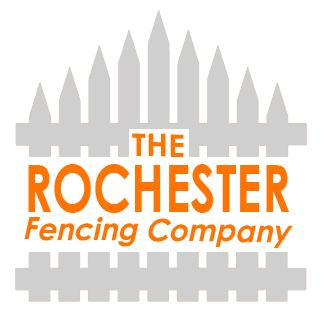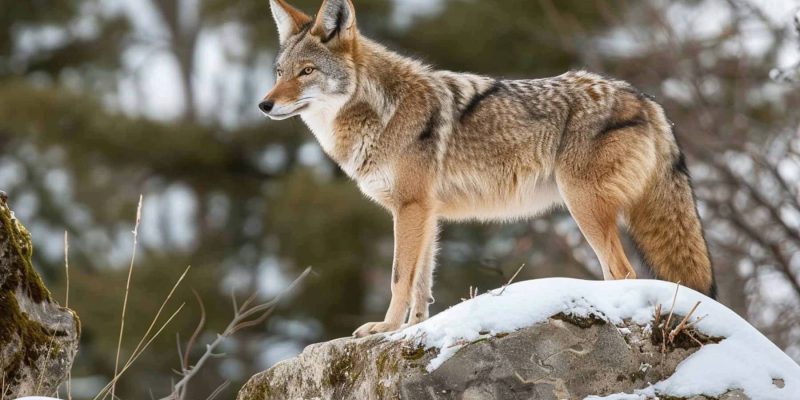Ever wondered which sneaky visitors can leap or clamber over your backyard fence? Well, you’re in the right spot! Today, we’re diving into the wild world of New York State’s climbers and jumpers, sharing tips to keep your greens and pets safe. So, let’s buckle up and learn how to live in harmony with our furry neighbors, shall we?
Understanding Wildlife in New York State
In the lush landscapes of New York State, our backyards are a hot spot for a variety of wild animals. Some of the most common fence-climbing culprits include raccoons, known for their dexterous front paws, and deer, famous for their impressive jumping abilities.
But that’s not all; we also have small rodents and even the occasional skunk who think your garden is their personal buffet. Identifying these critters is step one in our wildlife-proofing mission.
Safety Tips to Prevent Wildlife Encounters
Living in harmony with our wild neighbors in Rochester requires a bit of wisdom and effort. Here are some beefed-up safety tips to prevent wildlife encounters and ensure your backyard remains your sanctuary:
Securing Food Sources
Animals are attracted to easy meals, and your garbage can is the equivalent of a free buffet. Invest in cans with locking lids and consider storing them in a shed or garage until pickup day. Compost piles should also be enclosed or located far from your house to not attract critters.
… your garbage can is the equivalent of a free buffet for wild animals.
Water Attractions
Just like food, easy access to water will draw animals in. Make sure to empty out any standing water in buckets, bird baths, or pet dishes at night. If you have a pond or pool, installing motion-activated lights can deter nocturnal visitors.
Deterrents and Repellents
From store-bought sprays to homemade mixtures, repellents can make your garden less appealing. Capsaicin sprays (the stuff that makes chili peppers hot) can discourage nibblers, while a mix of garlic and water may keep some insects and mammals at bay. Remember, you’ll need to reapply after rain and explore which mixtures work best for your specific visitors.
Physical Barriers
Besides fences, consider using netting or row covers to protect vegetable gardens, and tree guards to prevent climbers from damaging trees or reaching bird nests.
Keeping It Clean
Regularly cleaning up fallen fruits, nuts, and seeds from your yard can reduce food sources for wildlife. Similarly, keeping your yard free of thick brush and tall grass can make it less inviting as a hiding spot.
Pets and Play
Keep pet food indoors and supervise your pets when they are outside, especially at dawn and dusk when many predators are most active. Installing a motion-activated sprinkler system can also help keep animals away from play areas and gardens.
By implementing these strategies, you not only protect your property but also contribute to the well-being of the local wildlife, ensuring that encounters with these creatures are safe and respectful for both parties.
Fencing Solutions for Wildlife Management
Choosing the right fence can make all the difference in deterring wildlife from entering your yard. Here’s how to tailor your fencing solution to the animals most common in Rochester:
Rabbits and Small Rodents
To keep these small burrowers out, your fence should extend at least 12 inches below ground. L-shaped footers made of wire mesh can prevent digging, while a height of 2-3 feet above ground is usually sufficient. Materials like vinyl or welded wire offer durability against gnawing.
Deer
Given their ability to leap great distances, deer require taller barriers. An 8-foot high fence is ideal, but if space or regulations don’t allow for it, consider double fencing with two 4-foot fences spaced 4 feet apart – deer have difficulty jumping both height and distance simultaneously.
Raccoons
These clever climbers can be thwarted by installing a fence with a 45-degree outward angle at the top. Smooth, slippery materials added to the top of the fence can also prevent their grip.
Coyotes
If these are a concern, roller bars or coyote rollers on the top of the fence can prevent them from gaining the leverage needed to pull themselves over.
NOTE
Each animal requires a specific strategy, so understanding the behaviors and abilities of local wildlife is crucial in choosing the right fencing solution.
Hiring a Professional for Fence Installation
While some homeowners may consider DIY fencing solutions, engaging a professional can ensure your fence is installed correctly and efficiently. Professionals bring expertise in selecting the right materials and designs for your specific wildlife challenges and can even install the fence at the right property line.
They can also navigate any local regulations or permits required for fence installation. By hiring a pro, you’re investing in peace of mind, knowing your fence will stand strong against the local wildlife, safeguarding your property for years to come.
Integrating Fences with Environmental and Wildlife Conservation
Fencing our yards for safety doesn’t mean we can’t also consider the broader ecosystem. Integrating conservation-minded practices into our fencing solutions benefits both homeowners and wildlife:
- Permeability: Where possible, use fencing that allows for the passage of non-problematic wildlife. For example, leaving small gaps at the bottom of fences for small creatures to pass through while keeping out larger ones.
- Material Choices: Opt for eco-friendly or sustainably sourced materials that are durable and non-toxic to the environment and animals.
- Habitat Creation: Incorporate elements that support wildlife outside your fence. Planting native bushes, flowers, and trees can provide food and shelter for birds and beneficial insects, encouraging natural pest control.
- Education and Awareness: Use your fencing solution as a way to educate your family and community about local wildlife. Understanding the role each species plays in the ecosystem can foster a more harmonious living environment.
- Consultation with Experts: Before making any decisions, it’s worth consulting with local wildlife experts or conservation groups. They can offer advice on the most effective and humane fencing solutions for your area.
Additional Considerations
Innovative Technologies: Explore the latest in fencing technology, such as invisible or electronic barriers that can be effective for certain types of wildlife without altering the aesthetics of your property.
Community Initiatives: Engaging with your community in wildlife management efforts can lead to more comprehensive solutions. Neighborhood-wide initiatives can address larger wildlife corridors and shared spaces, making individual efforts more effective.
Legal Considerations: Always check local regulations regarding wildlife and fencing. Some animals may be protected, and certain fencing types might require permits.
Common Concerns and Questions
How can I keep my fence in good shape despite wildlife?
Regular checks and maintenance are key. Look for signs of digging, chewing, or damage, and address these issues promptly to keep your fence functional and effective.
Are there any legal things I need to know about fencing against wildlife?
Yes, always check local regulations and guidelines on wildlife management. Some methods may be restricted, and it’s important to address wildlife issues humanely and legally.
Conclusion
And there you have it, folks—a starter guide to coexisting peacefully with the wildlife. By understanding who’s hopping and climbing into our yards, and taking strategic steps to prevent these visits, we can enjoy our outdoor spaces without unexpected guests. Here’s to a safer, wildlife-friendly Rochester!

